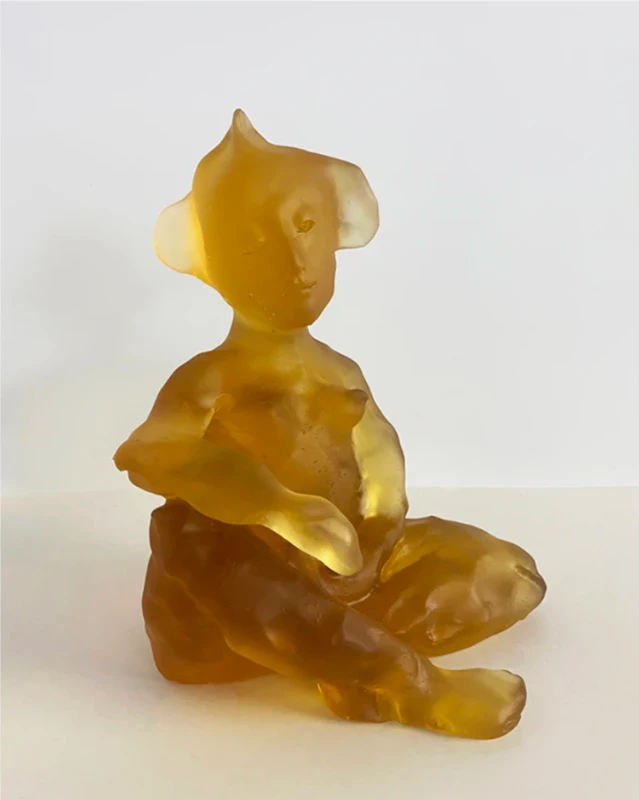Paloma Varga Weisz: Glass
12 Jul-19 Aug 2023
PV 12 Jul 2023, 6-8pm


Paloma Varga Weisz unveils a new body of work in cast glass that extend her long running Wilde Leute series, shown in dialogue with a number of recent watercolour drawings on paper, at the Bury Street gallery in St James’s.
Varga Weisz’s new sculptures represent the first time she has worked with glass, signalling a significant new stage in her sustained exploration of sculpture as a medium and traditional modes of craftsmanship. Developed over the past year, the body of work emerged from Varga Weisz’s experience of glass during a visit to Murano, following which she began a collaboration with glassmakers in South Tirol to explore the unique potential to express the transitory elements of light and colour inherent to the medium. Reconceived in glass, the sculptural figures draw new parallels with the transparent quality of her watercolour drawings, in which light and colour become transformational elements that animate her characters with formal and metamorphic fluidity.
As throughout her practice, the sculptures are not pre-conceived but are instead shaped intuitively. Made first as clay maquettes, their androgynous forms reveal subtly articulated expressions offset by gestural bodily contours, as though cloaked in smooth fur-like outer skins. Based on Varga Weisz’s ongoing series of the same title (begun in 1998 and loosely translating as Wild Bunch), the works extend the artist’s personal iconography that she has evolved over the course of her career; resting at the intersection of the natural world, human desire, myth, surrealism, and modernism. Akin to their earlier counterparts – in terracotta and wood – the assembly of glass figures emerge as fantastical, hybridised beings redolent of folk tales or childhood imagination, in varying attitudes of meditative contemplation.
Originally arranged into small groupings, the series draw reference to early and medieval Renaissance interpretations of familial intimacy and harmonious communing with nature. Yet, Varga Weisz conveys her figures with abstract fluidity blurring the preconceived boundaries of gender; the varying arrangements of elder and childlike characters envisioning families with manifold and diverse interrelationships of primordial intimacy freed of convention.
Subsequently cast in luminous, coloured glasses – of amber, blue, greens, pink, and lilac – the families and their various characters are transposed as tender apparitions, their presence animated by light refracted from within the medium. These anthropomorphic figures evoke shifting unworldly identities unmoored from a specific time or locus, investing their characters with individual psychoanalytical auras; to which Varga Weisz relates Sigmund Freud’s aesthetic view of the uncanny, an emotive response prompted by the strangeness or mutability in the everyday.
Echoing the sculptures’ ethereal presence, Varga Weisz’s watercolour drawings depict a host of elusive characters, surreal and folkloric, that occupy the same transitory realm. Since her early training as a woodcarver in the late 1980s, Varga Weisz has continuously made watercolour drawings alongside her sculptures; the immediacy of the medium acting as a counterpoint to the meticulous process of wood carving and ceramics. The subjects of her latest drawings appear in a state of metamorphosis, their faces’ serene expressions distilled with emotional intimacy, oscillating in mood between absurdity and abjection, humour and pathos.